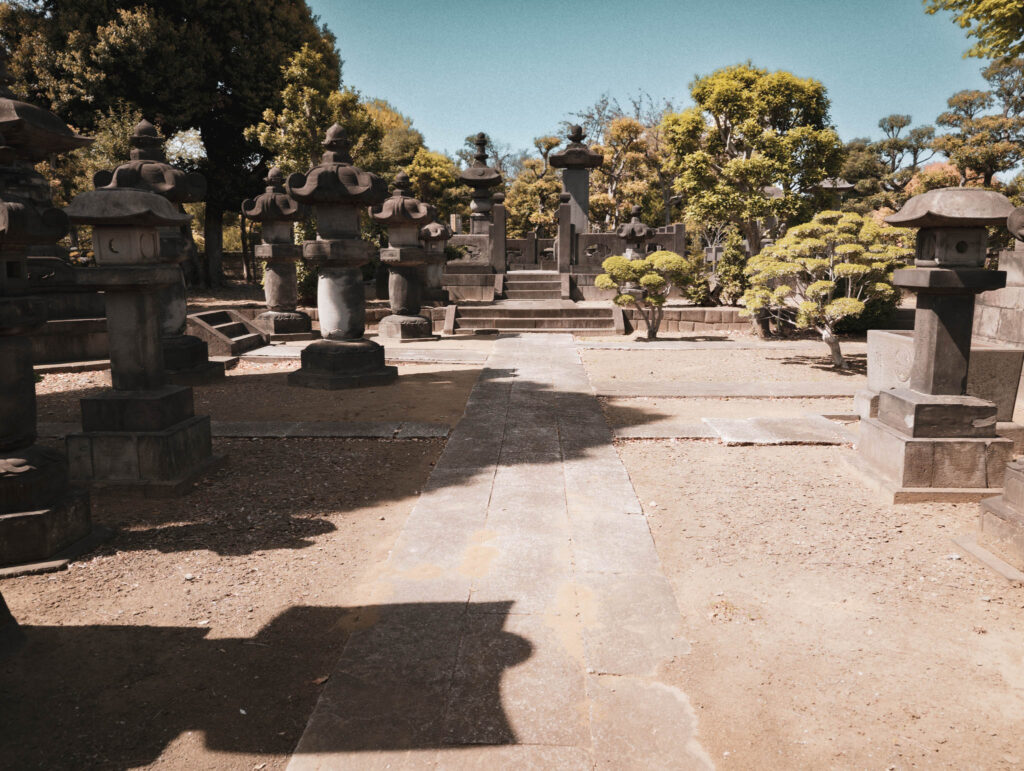
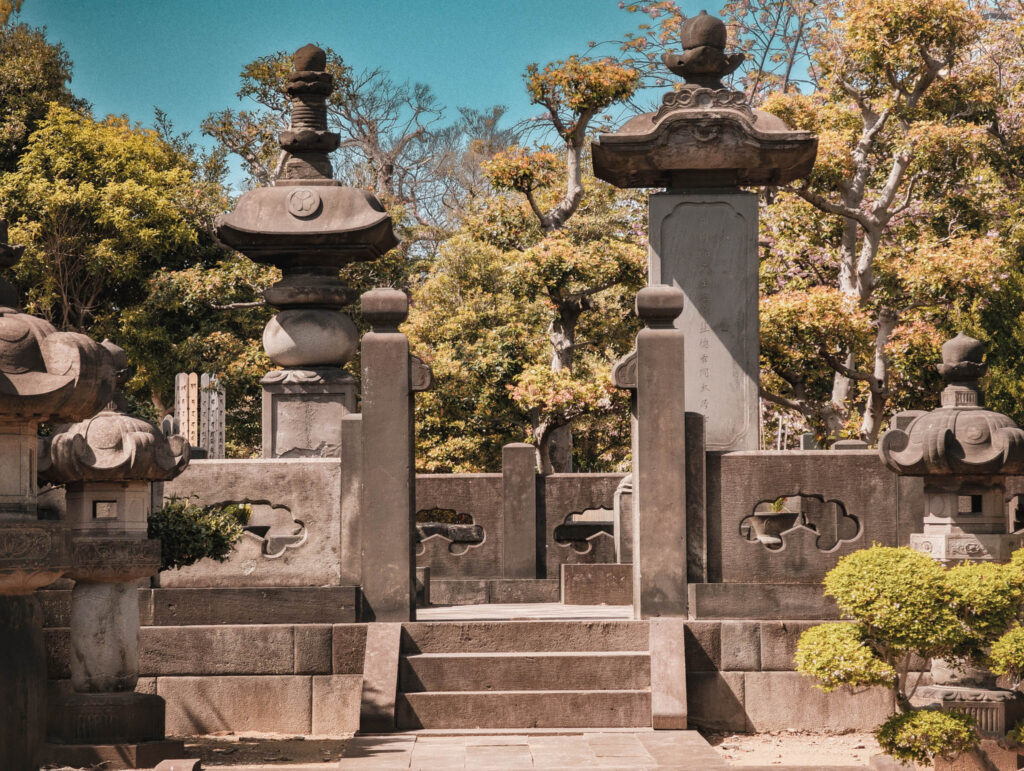
On an unseasonably-harsh noon I walked along the edge of Yanaka Bochi — once the graveyard of Tenno-ji — with the intention of finding the locked “hollyhock” mon-marked gates to the Tokugawa family plot that holds the cairn of Tokugawa Yoshinobu, the shogun who resigned and abandoned his military (he claimed) to avoid a greater civil war with the Meiji Emperor’s forces.
But I was distracted appropriately enough by a portent of mortality — if a silly one. My wife, who was indulging my interest in Japanese history, pointed out that I seemed to be showing the beginning of severe sunburn on my temples and scalp. The thinning hair of late middle age was clearly no longer sufficient protection against the Japanese sun. So my Tokugawa quest was cut short by a more urgent search for a well-stocked konbini to purchase some SPF 30 and maybe a hat.
The two photos above were all I managed to take, through the bars of the gate, of the coldly-ordered, more-southern of the two labeled Tokugawa plots (which is not the one interring Yoshinobu). But I also noticed — and phone-photographed quickly as we departed — a smaller walled tomb some distance from the main Tokugawa sections, made of the same dark sandstone as the monuments in the main plots but weedily neglected.
I can’t help but wonder who this other Tokugawa was, the family monument secured, below eroded shallow carvings of the hollyhock crest, with a simple chain and a cheap modern padlock. If he wasn’t a last prince who surrendered without a fight and trooped off into exile to avoid a national bloodbath, why did he deserve such a forlorn exile?
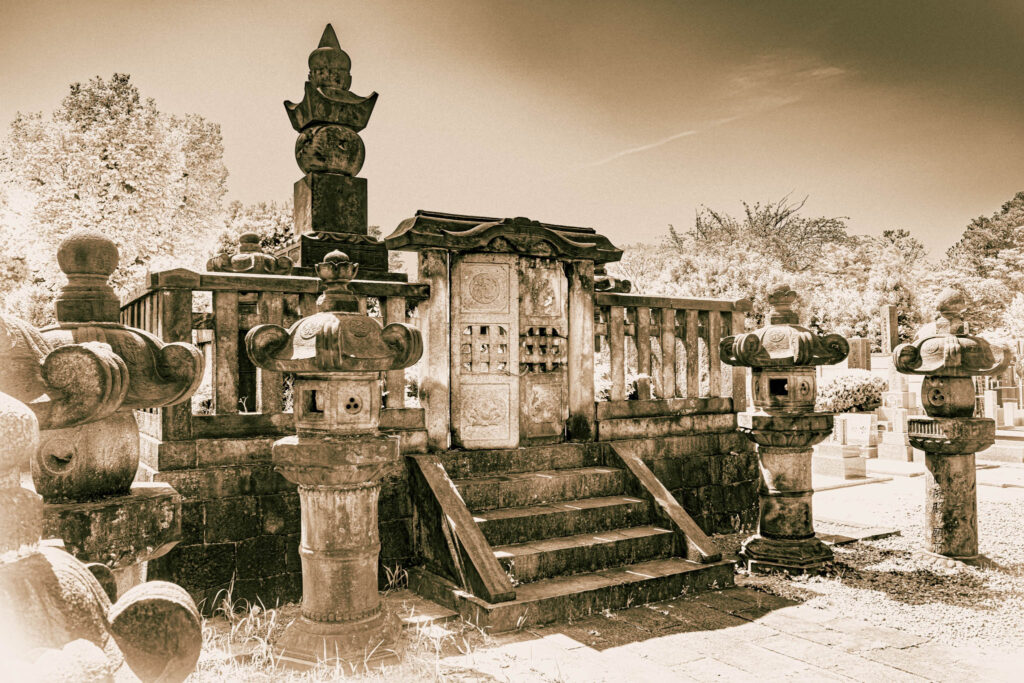
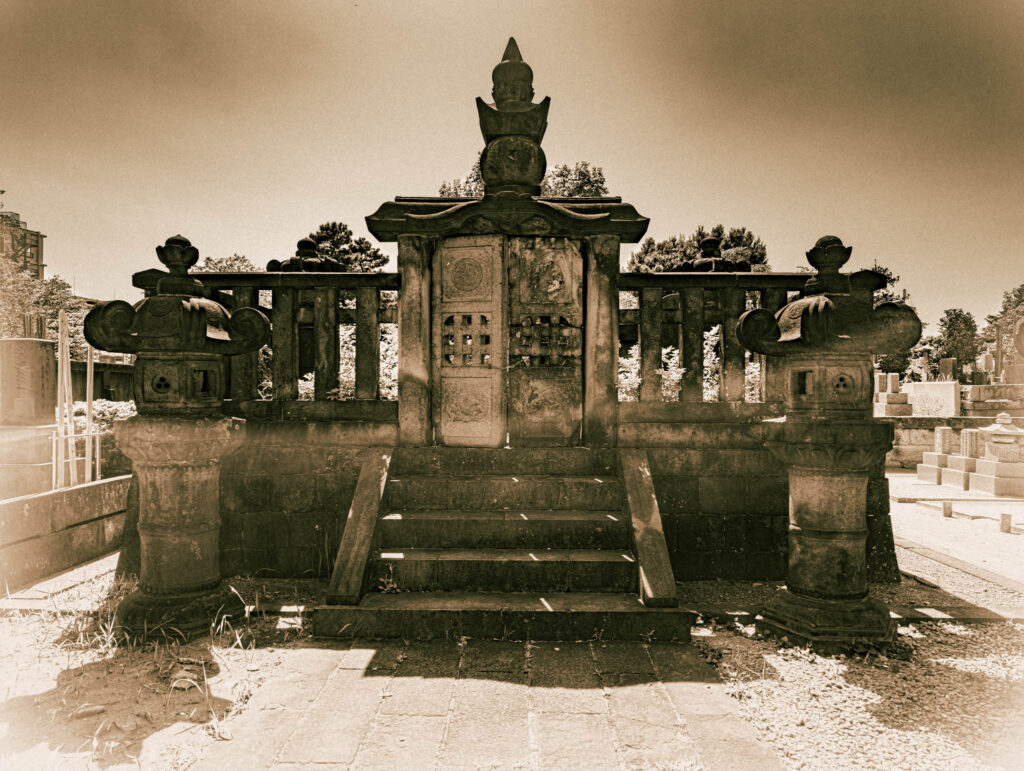
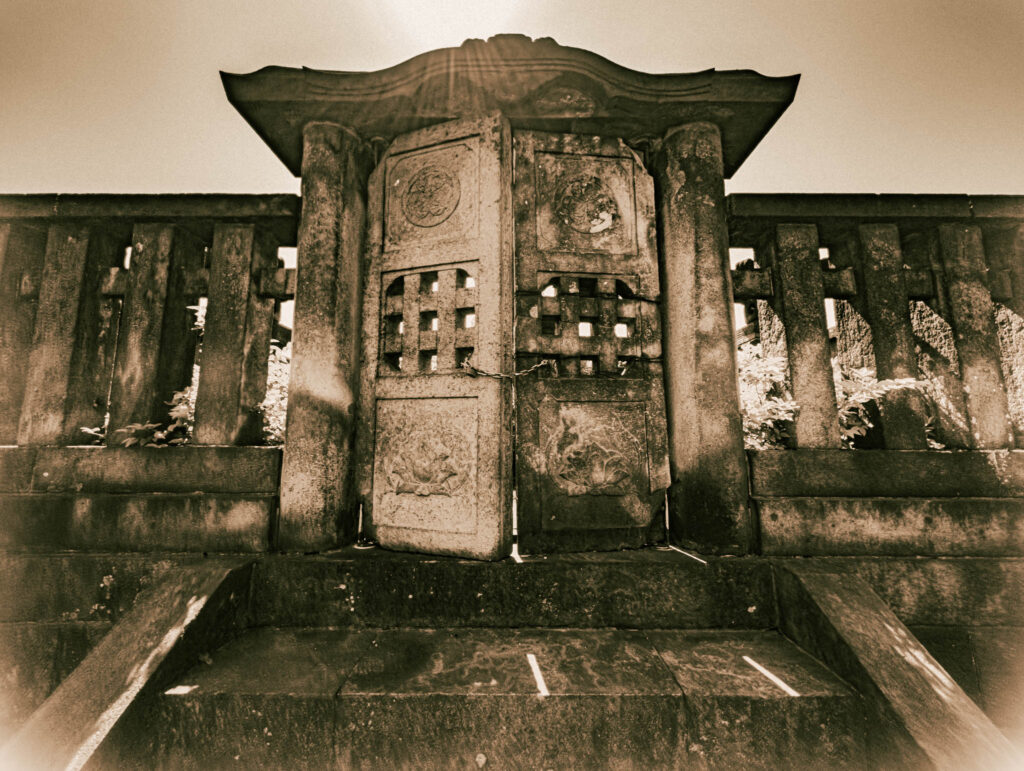
Leave a Reply